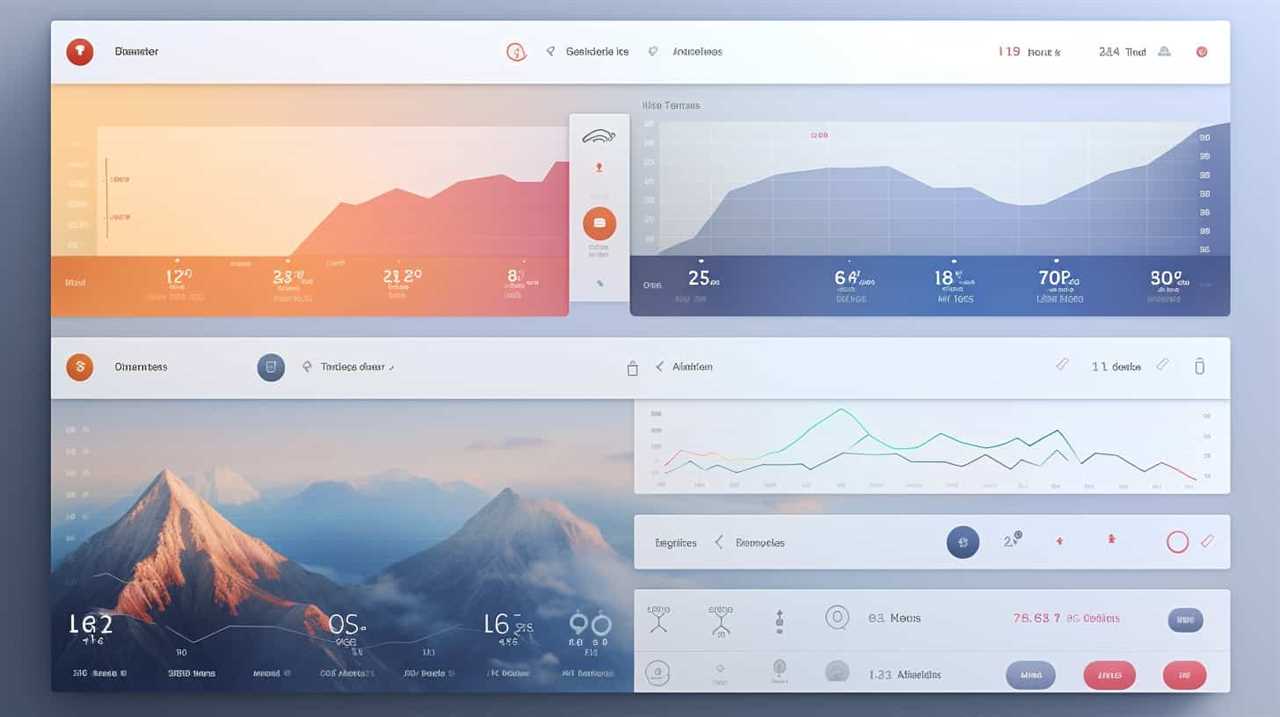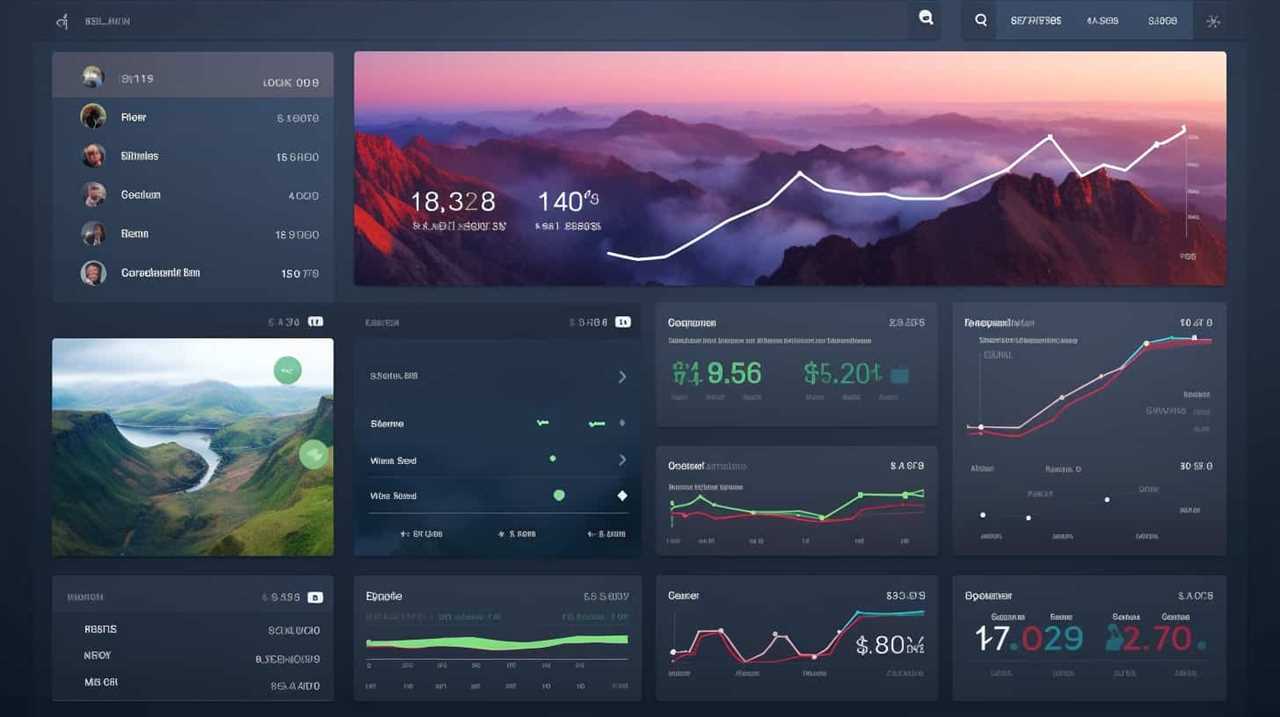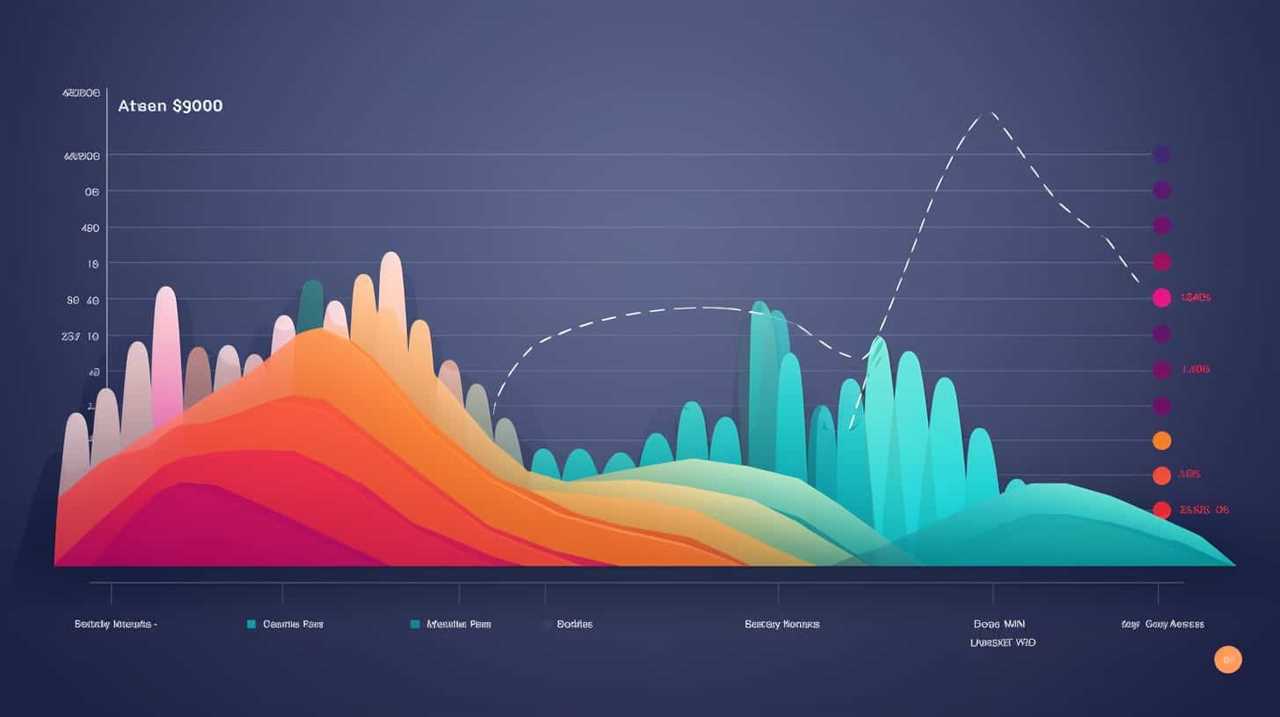Are you ready to dive into the enthralling world of B2B SEO? Brace yourself, because we’re about to start a data-driven adventure that’s sure to amaze you.
In this article, we’ll explore how B2B SEO differs from its B2C counterpart and why it’s crucial for businesses to understand these distinctions.
From keyword research to link building tactics, we’ll equip you with the knowledge you need to conquer the challenges of B2B SEO and achieve mastery in the industry.
Let’s get started!

Key Takeaways
- Understanding the target audience is crucial for effective B2B SEO.
- Long-tail keyword optimization targets niche keywords with lower competition and higher conversion potential.
- Incorporating long-tail keywords improves organic search visibility.
- Optimizing each stage of the conversion funnel and implementing lead generation techniques are essential for successful B2B SEO.
Target Audience
When it comes to B2B SEO, we need to focus on identifying and reaching our target audience. Understanding our target audience is crucial for effective marketing strategies. By creating accurate buyer personas, we can tailor our content and SEO efforts to meet the specific needs and preferences of our ideal customers.
Through careful analysis of demographics, behavior patterns, and pain points, we gain valuable insights that inform our keyword research and content creation. This data-driven approach ensures that our SEO efforts are optimized for maximum impact. By aligning our content with the interests and challenges of our target audience, we can attract the right prospects and drive conversions.
Now, let’s dive into the next step: keyword research, where we’ll uncover the most relevant and valuable keywords for our B2B SEO strategy.
Keyword Research
When it comes to keyword research in B2B SEO, there are several important points to consider.

Firstly, competitor analysis strategies play a crucial role in identifying the keywords that your competitors are ranking for and can help inform your own keyword targeting strategy.
Secondly, long-tail keyword optimization is key in B2B SEO as it allows you to target more specific, niche keywords that have lower competition but higher conversion potential.
Lastly, search volume is an important metric to consider when conducting keyword research, as it indicates the popularity and potential traffic of a particular keyword.
Competitor Analysis Strategies
To effectively implement competitor analysis strategies for keyword research in B2B SEO, we start by examining our industry peers’ online presence and identifying their top-performing keywords. Here are four key steps to conduct a thorough competitor analysis:

- Identify Competitors: Begin by identifying your top competitors in the industry. Look for companies that offer similar products or services and target the same audience.
- Analyze SEO Performance: Evaluate your competitors’ SEO performance by assessing their website traffic, domain authority, backlink profile, and keyword rankings. This will give you insights into their overall search visibility and keyword strategy.
- Identify Top-Performing Keywords: Use keyword research tools to identify the keywords that drive the most organic traffic to your competitors’ websites. Pay attention to both high-volume and long-tail keywords that are relevant to your business.
- Analyze Keyword Difficulty: Assess the competitiveness of the identified keywords by analyzing their search volume, competition level, and difficulty score. This will help you prioritize the keywords that are most valuable and achievable for your SEO efforts.
By conducting a comprehensive competitor analysis, you can gain valuable insights and develop a targeted keyword strategy to improve your SEO performance.
Now, let’s delve into the next topic: long-tail keyword optimization.
Long-Tail Keyword Optimization
Now, let’s dive into how we can optimize long-tail keywords through keyword research in B2B SEO. Long-tail keyword targeting is an essential component of SEO best practices in B2B marketing. When conducting keyword research, it’s crucial to focus on specific phrases that accurately represent the products or services offered.
These long-tail keywords, typically consisting of three or more words, may have lower search volumes but are highly targeted and more likely to convert. By incorporating these keywords into our content, we can attract qualified leads and improve our organic search visibility. Additionally, long-tail keywords often have less competition, allowing us to rank higher in search engine result pages.

Now that we understand the importance of long-tail keyword optimization, let’s explore the next area of focus: the importance of search volume.
Search Volume Importance
Now let’s delve into the significance of search volume in keyword research for B2B SEO, building upon our previous discussion on long-tail keyword optimization. Understanding search volume analysis is crucial for identifying the popularity and demand of specific keywords in your industry.
Here’s why search volume is important:
- Better targeting: By analyzing search volume, you can identify high-volume keywords that have the potential to drive more targeted traffic to your website.
- Keyword prioritization: You can prioritize keywords with higher search volume, as they indicate greater user interest and potential for conversions.
- Competitive analysis: Search volume analysis helps you understand keyword competitiveness. Identifying keywords with high search volume and low competition can give you a competitive advantage.
- Content optimization: By incorporating keywords with high search volume into your content, you can improve your chances of ranking higher in search engine results pages.
Content Strategy
When it comes to content strategy in B2B SEO, our focus is on targeting relevant keywords, optimizing for user intent, and incorporating industry-specific trends.

By conducting thorough keyword research, we can identify the key terms and phrases that our target audience is searching for, allowing us to create content that addresses their specific needs and interests.
Additionally, optimizing our content for user intent ensures that we’re providing valuable information and solutions to our audience, increasing the chances of engagement and conversions.
Lastly, staying updated on industry trends allows us to create timely and relevant content that positions us as thought leaders in our field.
Targeting Relevant Keywords
To effectively target relevant keywords in our B2B SEO content strategy, we prioritize using a comprehensive approach that combines thorough research and strategic planning. Here’s how we do it:

- Conduct in-depth keyword research: We analyze our buyer persona and identify the keywords they’re likely to use when searching for our products or services.
- Evaluate keyword competition: We assess the competitiveness of each keyword to determine which ones have the highest potential for ranking and driving organic traffic.
- Optimize on-page content: We strategically incorporate the targeted keywords into our website content, including headings, meta tags, and body copy, to improve relevancy and visibility.
- Create high-quality, valuable content: We focus on producing informative, engaging content that aligns with the intent behind the targeted keywords, providing value to our audience.
By targeting relevant keywords using this approach, we can optimize our B2B SEO content strategy to increase visibility, attract the right audience, and drive conversions.
Now, let’s explore how optimizing for user intent can further enhance our SEO efforts.
Optimizing for User Intent
To optimize our B2B SEO content strategy, we focus on aligning our content with user intent and delivering valuable information to our audience. Optimizing for user intent means understanding what our target audience is searching for and creating content that fulfills their needs. By doing so, we not only improve user engagement but also enhance our search engine rankings.
To optimize for user intent, we conduct thorough keyword research to identify the most relevant and high-performing keywords. We then create content that addresses these keywords while also providing valuable insights and solutions to our audience. By aligning our content with user intent, we increase the chances of our website appearing in search results when users are actively seeking information related to our industry.

In addition to keyword optimization, we also focus on creating user-friendly and accessible content. This includes using clear headings, bullet points, and concise language to make our content easily scannable and digestible. By optimizing for user intent, we not only improve user engagement but also establish ourselves as a trusted and authoritative source in our industry, ultimately boosting our search engine rankings.
Incorporating Industry-Specific Trends
To effectively incorporate industry-specific trends into our B2B SEO content strategy, we prioritize staying up-to-date with the latest developments and tailoring our content accordingly. This ensures that our content remains relevant and resonates with our target audience.
Here are four key strategies we employ to incorporate industry-specific trends:
- Incorporating voice search: With the rise of voice assistants like Siri and Alexa, optimizing our content for voice search has become crucial. We focus on incorporating long-tail keywords and conversational phrases to align with how users interact with voice search.
- Utilizing influencer marketing: Collaborating with industry influencers allows us to tap into their expertise and credibility. By featuring influencer content on our platforms, we not only provide valuable insights to our audience but also enhance our brand authority.
- Analyzing industry data: We closely monitor industry data to identify emerging trends, topics, and keywords. This helps us create content that addresses the most relevant and timely information for our audience.
- Engaging in industry discussions: Actively participating in industry forums, social media groups, and conferences allows us to stay connected with the latest discussions and conversations. This helps us understand the pain points of our target audience and create content that addresses their specific needs.
Conversion Funnel
We frequently optimize the conversion funnel to drive more leads and increase sales for our B2B SEO strategy.

The conversion funnel is a key component in maximizing the effectiveness of our marketing efforts. By understanding the customer journey and analyzing data, we can identify areas for improvement and implement targeted strategies to enhance the conversion rate.
We focus on optimizing each stage of the funnel, from awareness to consideration to decision, ensuring that prospects smoothly progress through the buying process.
Through A/B testing, we experiment with different elements such as landing page design, call-to-action placement, and content personalization, to determine the most effective tactics.
By continuously monitoring and refining our conversion funnel, we can drive more qualified leads and ultimately increase sales.

Now, let’s explore the next section on link building tactics.
Link Building Tactics
Continuing our optimization of the conversion funnel, we employ effective link building tactics in our B2B SEO strategy. Link building is a crucial aspect of SEO as it helps improve search engine rankings and increases organic traffic to your website.
To ensure success in our link building efforts, we utilize the following strategies:
- Conduct thorough backlink analysis: We analyze our competitors’ backlinks to identify potential linking opportunities and understand the quality of their links.
- Create high-quality content: We focus on creating valuable and informative content that naturally attracts backlinks from authoritative websites.
- Outreach to relevant websites: We reach out to industry influencers and relevant websites to build relationships and secure backlinks.
- Monitor and disavow harmful links: We regularly monitor our backlink profile and use tools to identify and disavow any harmful or spammy links that could negatively impact our rankings.
On-page Optimization
One key aspect of our B2B SEO strategy is implementing on-page optimization techniques.

On-page optimization refers to the process of optimizing individual web pages to improve their search engine rankings and drive organic traffic. This involves various technical and content-related factors that contribute to a better user experience and higher visibility on search engines.
To achieve user intent optimization, we focus on understanding the search intent behind user queries and tailoring our on-page content to meet those needs effectively. This includes incorporating relevant keywords, structuring content for readability, and optimizing meta tags and headings.
Additionally, mobile optimization is crucial as more and more users are accessing the internet through their mobile devices. By ensuring that our web pages are mobile-friendly and load quickly, we can enhance the user experience and improve our search engine rankings.
Metrics and Analytics
To measure the effectiveness of our on-page optimization efforts, we utilize metrics and analytics. Metrics tracking and data analysis play a crucial role in evaluating the performance of our B2B SEO strategies. Here are four key elements we focus on when it comes to metrics and analytics:

- Keyword Rankings: We track the rankings of our targeted keywords to gauge our visibility and monitor any fluctuations.
- Organic Traffic: By analyzing the amount of organic traffic we receive, we can determine if our SEO efforts are driving relevant visitors to our website.
- Conversion Rates: We measure the conversion rates of our B2B SEO campaigns to assess how effective they’re at generating leads and driving sales.
- User Engagement: We analyze metrics such as bounce rate, time on page, and pages per session to understand how engaged our audience is with our content.
Lead Generation Techniques
When it comes to lead generation techniques in B2B SEO, targeted keyword research is crucial. By identifying the right keywords that potential customers are using, we can optimize our content to attract qualified leads.
Content marketing strategies also play a significant role, as creating valuable and informative content can attract and engage potential customers.
Additionally, conversion rate optimization techniques ensure that our website is designed to convert visitors into leads effectively.
Targeted Keyword Research
We conduct targeted keyword research to generate leads in B2B SEO. Here are four key techniques we use to optimize our keyword targeting strategy:

- Competitive Analysis: We analyze our competitors’ websites to identify the keywords they’re targeting and their search rankings. This helps us understand the competitive landscape and find opportunities to outrank them.
- Keyword Research Tools: We employ advanced keyword research tools to gather data on search volume, competition, and related keywords. This data-driven approach allows us to identify high-value keywords that have the potential to drive targeted traffic and leads.
- Long-Tail Keywords: We focus on long-tail keywords that are more specific and have lower competition. These keywords may have lower search volume, but they often attract highly relevant traffic and have a higher conversion rate.
- Intent-based Keywords: We analyze user intent to understand the purpose behind their search queries. By targeting keywords that align with user intent, we can deliver content that satisfies their needs and generates qualified leads.
Content Marketing Strategies
As we dive into the realm of content marketing strategies, we continue to leverage our targeted keyword research to drive lead generation in B2B SEO.
One of the key aspects of successful content marketing in the B2B space is social media integration. By incorporating social media platforms into our content distribution strategy, we can reach a wider audience and increase engagement with potential leads.
Additionally, influencer collaborations play a crucial role in generating quality leads. By partnering with industry influencers who have a strong online presence and a loyal following, we can tap into their network and gain credibility and exposure.
These collaborations can take the form of guest blog posts, interviews, or co-creating content.

Conversion Rate Optimization
To optimize conversion rates and generate leads in B2B SEO, we employ various techniques. Here are four key strategies for conversion rate optimization and lead nurturing:
- Analyzing user behavior: By studying how users interact with our website, we can identify areas for improvement and make data-driven decisions to optimize conversion rates.
- Creating compelling CTAs: Call-to-action buttons play a crucial role in guiding users to take desired actions. We focus on creating persuasive CTAs that clearly communicate the value proposition and encourage conversions.
- Implementing A/B testing: Testing different versions of landing pages, forms, and CTAs allows us to identify the most effective elements that drive conversions and improve our lead generation efforts.
- Personalizing user experience: By tailoring content and offers to the specific needs and preferences of individual users, we can increase engagement and foster stronger relationships, ultimately leading to higher conversion rates.
Industry-Specific Challenges
While optimizing B2B SEO, it is crucial to address the industry-specific challenges that arise. One of the major challenges is the competitive landscape, where businesses in the same industry are vying for the top spot in search engine rankings. To overcome this challenge, it is important to conduct thorough competitor analysis and identify opportunities to differentiate our brand. Another challenge is niche targeting, as B2B industries often cater to specific audiences with unique needs. This requires in-depth keyword research and content optimization to ensure that our website appears in front of the right audience. To illustrate the importance of addressing industry-specific challenges, consider the following table:
| Industry | Competitive Landscape | Niche Targeting |
|---|---|---|
| Healthcare | High competition among hospitals and clinics | Targeting specialized medical equipment suppliers |
| Technology | Crowded market with numerous software companies | Focusing on cybersecurity solutions for financial institutions |
| Manufacturing | Global competition for machinery manufacturers | Targeting specific industries like automotive or aerospace |
Relationship Building With Businesses
After addressing industry-specific challenges, we now turn our attention to the importance of building relationships with businesses in B2B SEO. In the world of B2B SEO, business networking and customer retention are crucial for success.
Here are four reasons why relationship building is essential in B2B SEO:

- Trust and credibility: Building strong relationships with businesses helps establish trust and credibility, making it more likely for potential customers to choose your services over competitors.
- Referrals and recommendations: When you have a solid network of business connections, they can refer and recommend your services to their own clients and colleagues, expanding your reach and generating new leads.
- Collaboration and partnerships: Strong relationships with other businesses can lead to collaboration opportunities and partnerships, allowing you to tap into new markets and combine resources for mutual benefits.
- Repeat business and customer loyalty: By fostering strong relationships with your clients, you increase the likelihood of repeat business, customer loyalty, and positive word-of-mouth, which are vital for long-term success in B2B SEO.
Frequently Asked Questions
How Long Does It Take to See Results From B2B SEO Efforts?
It typically takes several months to see measurable results from B2B SEO efforts. By measuring ROI and optimizing landing pages, we can track progress and make data-driven decisions to achieve mastery in our SEO strategy.
What Are Some Common Mistakes to Avoid in B2B Seo?
In B2B SEO, it’s crucial to avoid common mistakes. Overlooking keyword research and neglecting on-page optimization can hinder our success. We need to be data-driven, keyword-focused, and technically proficient to master this field.
Are There Any Specific SEO Tools or Software That Are Recommended for B2B SEO?
Yes, there are specific SEO tools and software recommended for B2B SEO. These tools help optimize website performance, track keyword rankings, analyze competitor data, and generate reports to improve B2B SEO strategies.
How Can B2B SEO Be Integrated With Other Marketing Strategies?
Integrating B2B SEO with other marketing strategies presents challenges, such as effectively combining it with social media marketing and aligning it with email campaigns. We must optimize across channels for success.

What Are Some Best Practices for Tracking and Measuring the Success of B2B SEO Campaigns?
When it comes to tracking and measuring the success of B2B SEO campaigns, we focus on measuring ROI and key performance indicators (KPIs). It’s essential to have a data-driven, keyword-focused, and technically sound approach to ensure mastery in this area.
Conclusion
In conclusion, understanding the nuances of B2B SEO is crucial for success in today’s competitive market.
By targeting the right audience, conducting thorough keyword research, and implementing a data-driven content strategy, businesses can optimize their conversion funnel and generate valuable leads.
Link building, metrics analysis, and relationship building with other businesses are also key components in achieving long-term success.

Embracing these industry-specific challenges and adopting a technical, keyword-focused approach will undoubtedly set businesses apart from their competitors.









